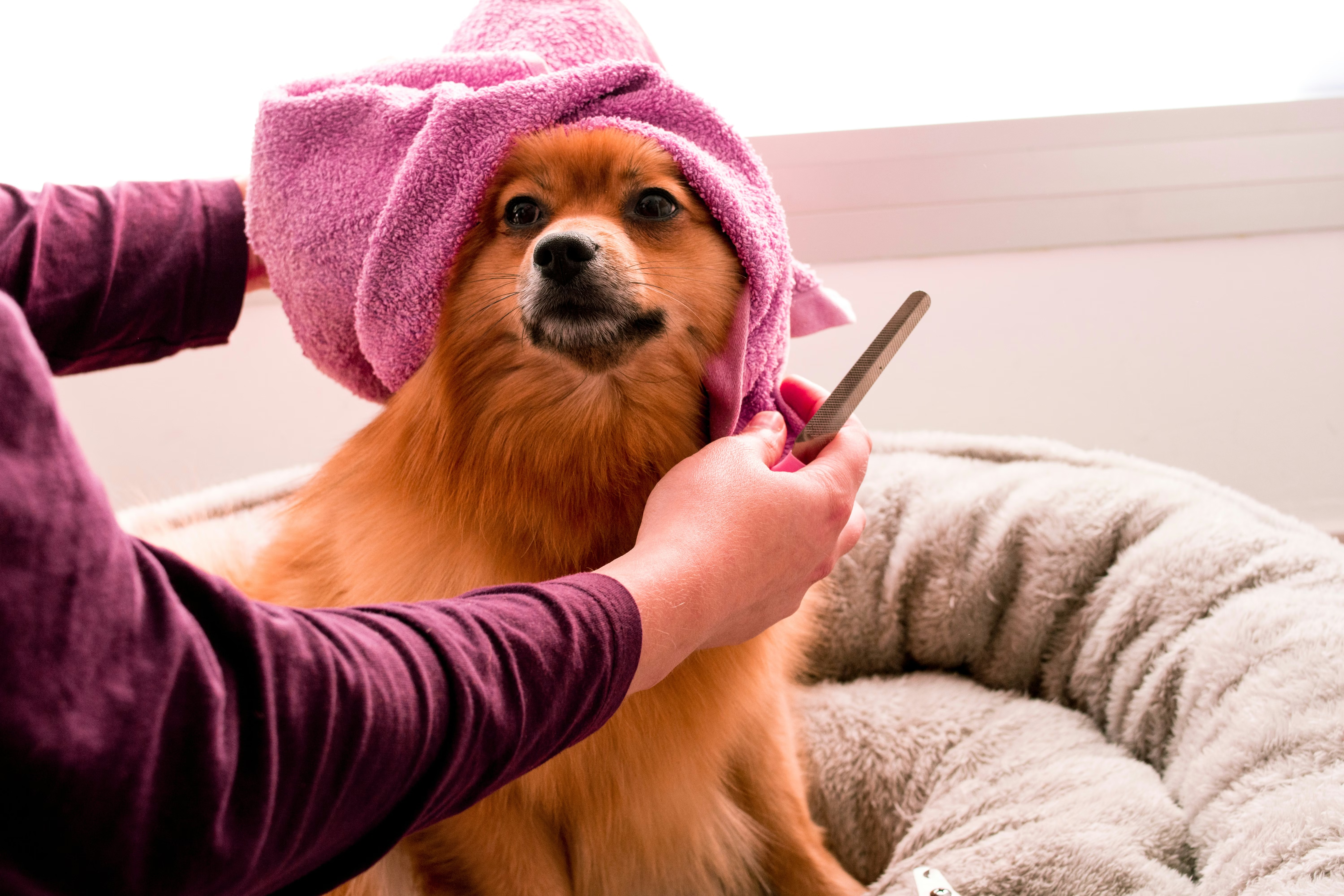Scratching and licking are normal behaviors for dogs…up to a point. But if your dog is licking or scratching so much that it starts to interfere with their daily activities, you may have an allergy issue on your hands.
Allergies are one of the most common health problems in dogs, with genetics, environmental factors, and foods all potentially playing a role. If you suspect your dog is suffering from allergies, your veterinarian is your best resource for diagnosing the issue and determining the underlying cause. But your vet isn’t the only partner you can lean on for help. You can also work with an allergy-friendly groomer for assistance managing the condition.
How grooming can help scratch the itch
Some breeds are more prone to allergies than others (think Shih Tzu, Boxer, Chinese Shar Pei, Labrador, Golden Retriever, various terrier types, and more). And physical traits like long ears, face rolls, and short snouts can create ideal environments for allergy-induced yeast and bacterial overgrowth. A consistent professional grooming and home grooming routine can help to identify and manage a dog’s allergies.
In fact, grooming is an essential part of pet care—especially if your dog has allergies. And while at-home grooming is important, professional groomers provide a second pair of eyes. They see your pup from nose to tail and can identify issues that may require a vet visit. Issues they might discover include inflammation, parasites, and ear infections. They may even spot tumors, which can be tricky to see hidden under thick fur if not examined periodically.
7 ways your groomer can help with your dog with allergies
Ear cleaning
Check with your groomer to learn how they clear ears. For allergies, using an ear wash that has a pH similar to that of a dog’s skin and a cotton round to clean the area (no Q-tips here!) will help.
Nail trimming
A nail trim from your groomer is more than just aesthetically pleasing. It also prevents uncomfortable splaying of the toes. And since they are seeing your pup’s paws up close, they can help catch if a nail bed infection is beginning.
Brushing
A thorough brushing from a groomer distributes natural oils in your dog’s fur and removes pollen, grass, and other contact irritants that can worsen allergies.
Sanitary trim
In addition to keeping your dog clean and comfortable, a professional sanitary trim of your dog’s genital area also prevents soiling, irritation, and infection.
Facial cleaning
Dogs need facials too! Regular facial cleanings help to prevent those precious face folds from harboring moisture and bacteria.
Bathing
If your pup has sensitive skin, talk to your vet and groomer about which hypoallergenic bathing products would work best for their specific issues to prevent skin irritation.
Anal gland expression
Boot-scooting across the carpet is a sign that your pup may need their anal glands professionally expressed by a groomer.
Choosing an allergy-friendly groomer
The key to a great grooming experience for a dog with allergies is finding the right groomer.
Start by talking to potential groomers about your dog’s allergies. Let them know what issues to look out for and ask what products and practices they have in place for dogs with similar concerns. Many groomers have products for sensitive skin and can recommend ones that best suit your dog’s needs.


















